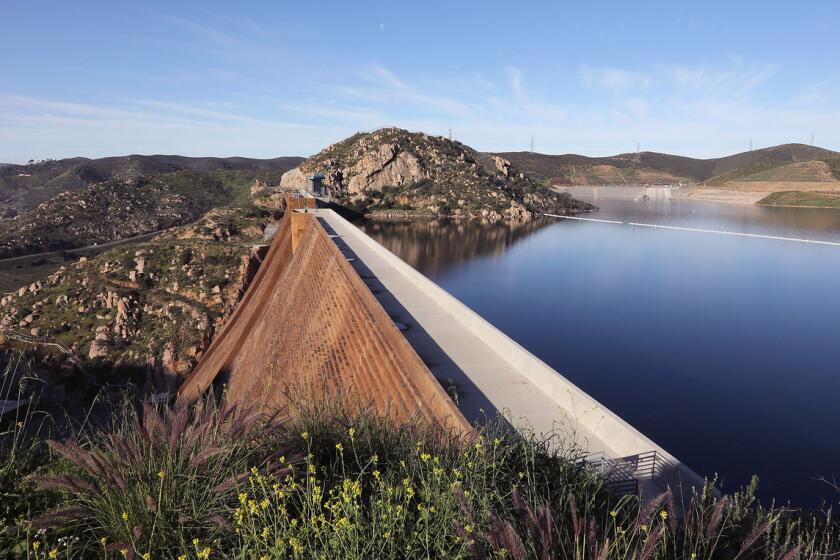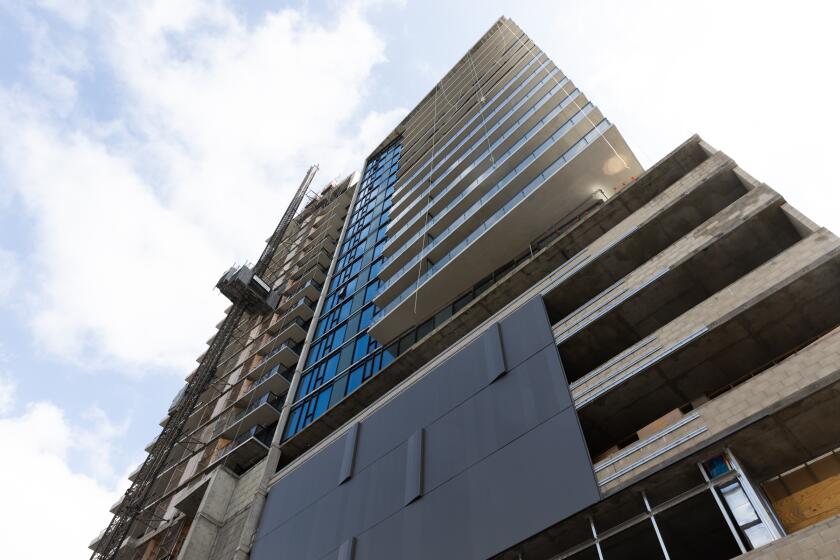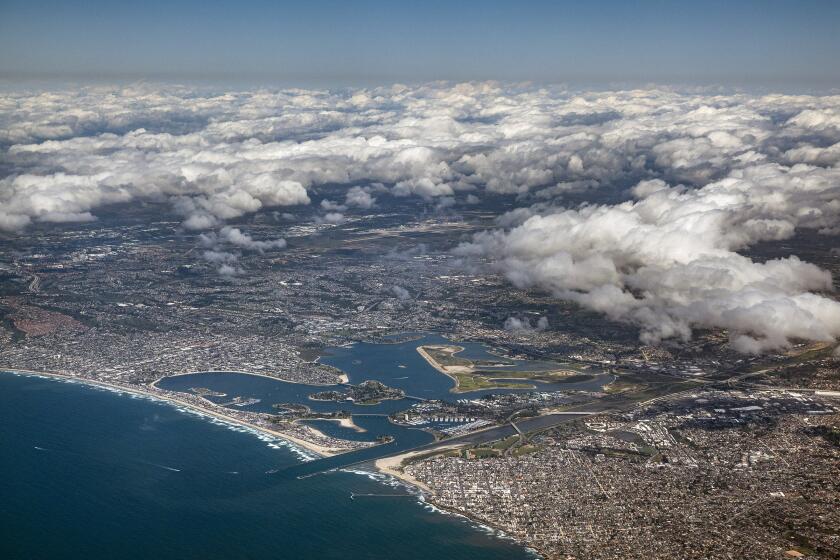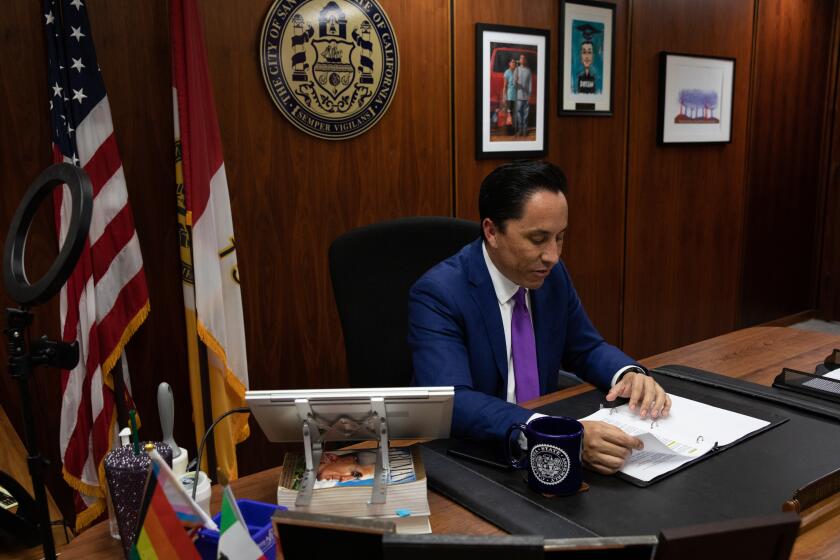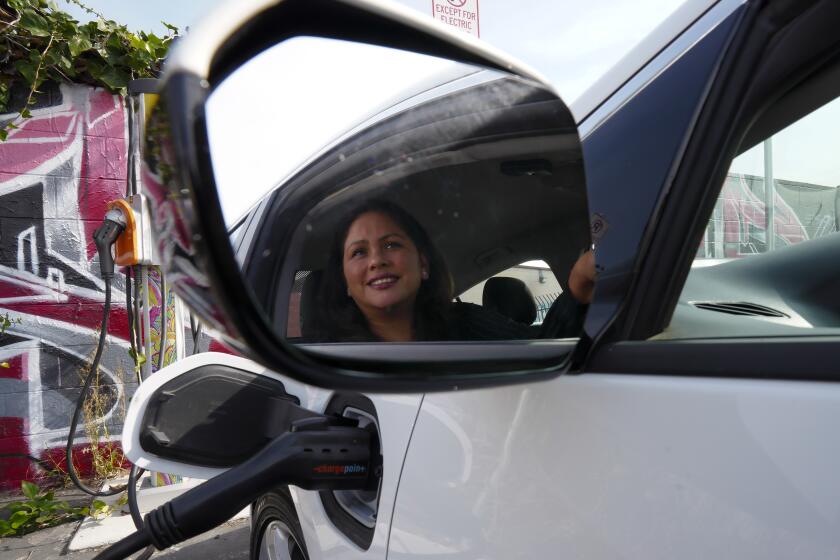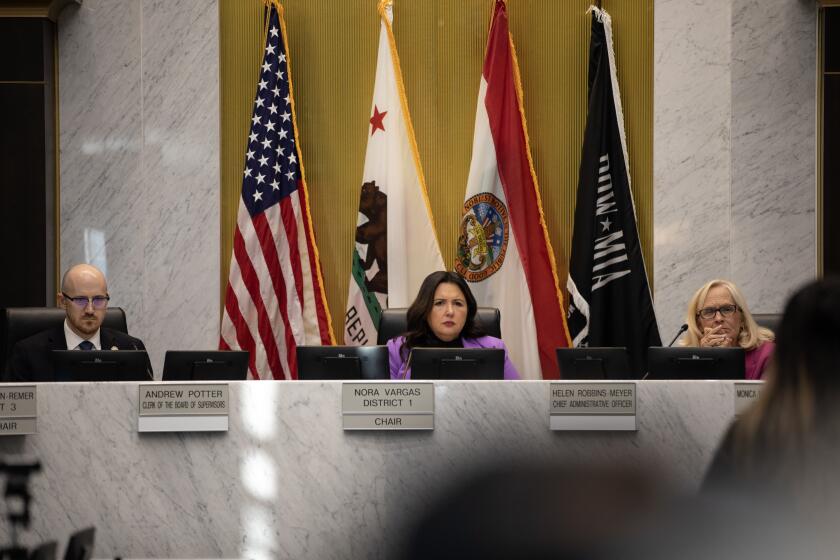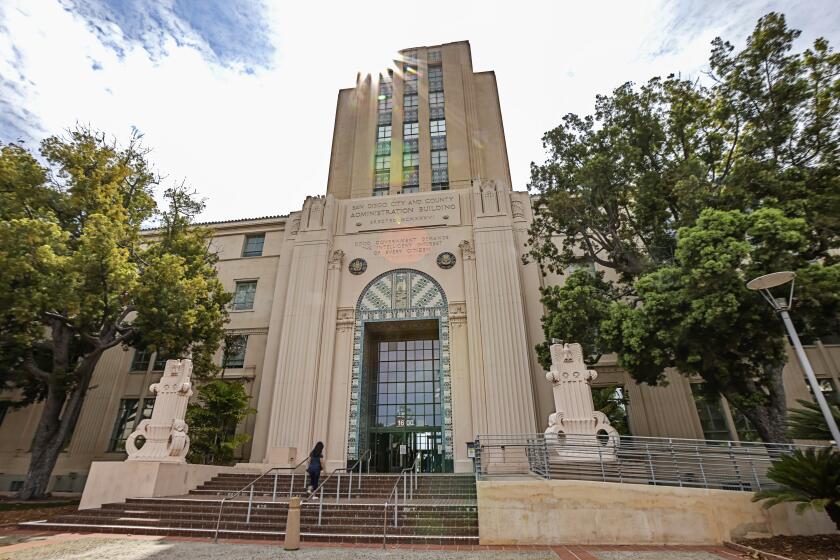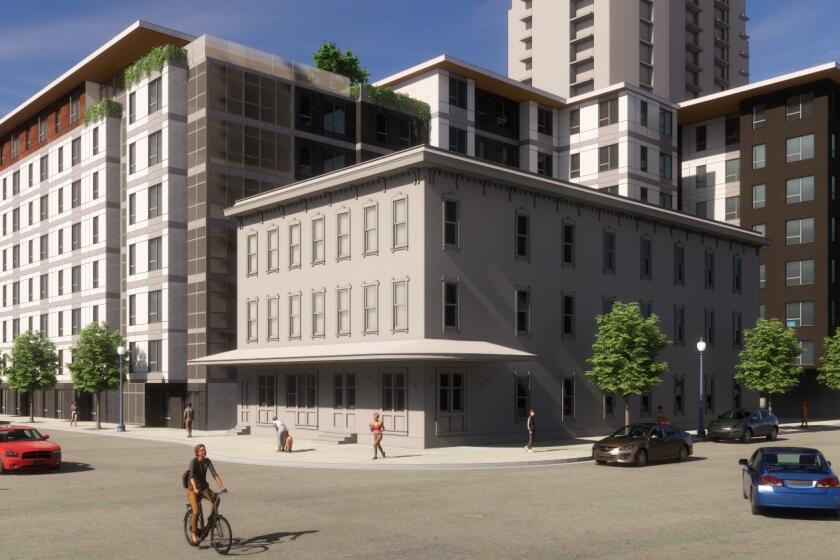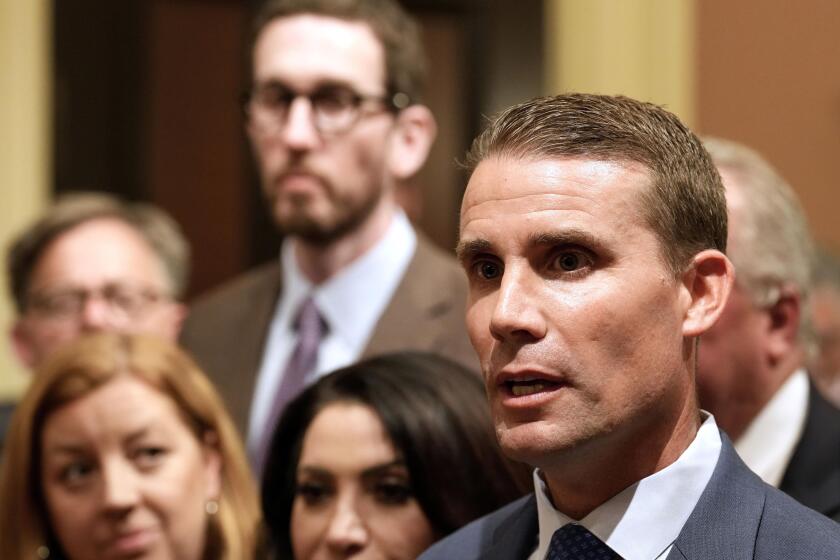San Diego County is on track for much higher water rates. Expect your bill to go up — but by how much?

Water authority officials said their financial future looks so bleak that the proposed increases are badly needed and delaying them isn’t an option. A vote is set for June 27.
Local water agencies are bracing for much higher wholesale water costs, after the County Water Authority board voted unanimously Thursday to move a rate hike proposal forward to a June 27 final vote.
The proposal would raise wholesale rates 19 percent in 2025 — and a total of 38 percent over three years — to help the authority cover financial losses caused by declining sales to local water agencies.
The increases will force local agencies to also raise rates — but how much of the hikes they pass on to customers could vary widely. Some agencies with groundwater basins or other local water supplies will be less affected.
The city of San Diego — which would suffer more than most water agencies, because it buys about 90 percent of its water from the authority — unsuccessfully tried to delay the vote until August on the lion’s share of the proposed hikes.
City officials said the water authority must look harder for savings or other opportunities, such as possible deals to sell water to new buyers outside the region.
They said inflation, rising rents and other factors have made the cost of living too high in San Diego to hit residents with a giant water rate increase.
“Too many people in our region are struggling to pay the bills,” said San Diego Councilmember Stephen Whitburn, a member of the water authority board. “Every dollar matters.”
Water authority officials said their financial future looks so bleak that the proposed increases are badly needed and that delaying them isn’t a realistic option.
Water sales, their main source of revenue, are down in both the short and long term and don’t appear poised to substantially bounce back — maybe ever.
Short-term, two unusually wet winters have left sales dramatically lower than projected for many months in a row.
Water sales to local agencies were 36 percent below projections during January, February, March and April. That comes after sales were 27 percent below estimates during 2023.
The long-term drop in demand for imported water is primarily the result of widespread conservation, replacement of grass with zeroscape yards and a shrinking local farm industry, officials said.
Water authority officials said the fundamental problem is that they borrowed money to build and maintain a significantly larger water storage and delivery system than is needed.
Hike is expected to be passed on to customers, but amounts likely to vary by agency; increase slated to be somewhere between 16 percent and 22 percent in 2025
Officials expected demand for imported wholesale water to keep growing with the population and development, but member agencies have been buying steadily less water during the last two decades.
While that has allowed the water authority to buy less imported water from outside the region, it hasn’t made a dent in the fixed costs it faces to pay off construction bonds and maintain the system.
Board members who strongly support the 19 percent increase next year said Thursday the authority essentially has no choice.
“No one’s happy or pleased,” said Amy Reeh, who represents the Yuima Municipal Water District near Pauma Valley. “Putting off the tough decisions and kicking the can down the road certainly isn’t going to make the decision any easier.”
The problem is only expected to get worse over the next few years when three large agencies — San Diego, Oceanside and El Cajon — start recycling sewage into drinking water they can use to cut down on imported water.
Regarding the city’s requests for more negotiations and some last-minute efforts to secure new water deals outside the region, water authority board member Neal Meyers expressed skepticism.
“We can slice and we can dice and we can juggle and horse-trade until the cows come home,” said Meyers, who represents the Olivenhain Municipal Water District. “We need to move on.”
San Diego Mayor Todd Gloria met with water authority officials last Friday to discuss options, and the mayor says he wants to keep meeting up until the June 27 vote.
“I believe more can be done to mitigate the proposed rate increase, and with more information and time, there is another path that could be taken,” Gloria wrote in a Wednesday memo to the authority board.
Board member Nick Serrano, a longtime Gloria aide, said the mayor and his staff hope the rate increases can be smaller.
“Have we done everything possible before going to the public and asking them to pay more?” Serrano asked. “I believe there’s more than we can do.”
The city, which controls 10 seats on the 36-member authority board, could have considered trying to prevent the proposed increases from moving forward to a June 27 vote.
Serrano said city officials opted instead to let the authority set the June 27 date and try to negotiate the rate hikes down before that vote.
“The city will not at this time be able to support a 19 percent increase,” Serrano said. “We look forward to the water authority sitting down with city staff to discuss some of the solutions we think we can bring to bear.”
Water authority staff said they empathize with the city and other agencies. But they said delaying or shrinking the rate hikes could jeopardize the authority’s credit rating, possibly increasing the interest it pays on $2 billion in debt.
Another driver of the proposed rate increases is the departure from the water authority of agencies serving Fallbrook and Rainbow, which opted to get water from nearby Riverside County instead.
Those departures, which have been estimates to cost the authority $140 million, make up about one-fifth of the 19 percent rate hike proposed for next year.
The authority is receiving exit fees from Fallbrook, which detached Jan. 1, and Rainbow, which is slated to detach this fall. But officials said those fees don’t cover the authority’s costs related to Fallbrook and Rainbow.
Another driver of the increases is the Metropolitan Water District of Southern California approving rate hikes of 8.5 percent each for 2025 and 2026. The Los Angeles-based agency sells wholesale supplies to San Diego and transports the region’s Colorado River water.
Get Essential San Diego, weekday mornings
Get top headlines from the Union-Tribune in your inbox weekday mornings, including top news, local, sports, business, entertainment and opinion.
You may occasionally receive promotional content from the San Diego Union-Tribune.
